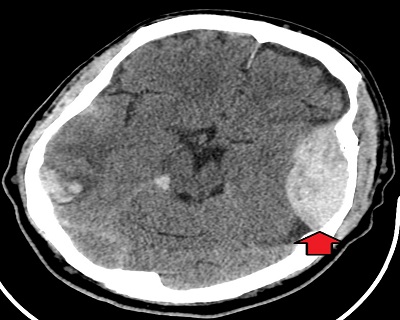
Brain Tumor
Treatment for a brain tumor can vary significantly depending on the type, location, size, and grade of the tumor, as well as the overall health…

Endoscopic Spine Surgery
Endoscopic spine surgery is a minimally invasive surgical technique used to diagnose and treat various spinal conditions and disorders. Unlike traditional open spine surgery, which…

Spinal fixation
Spinal fixation, also known as spinal fusion or spinal stabilization, is a surgical procedure used to treat various spinal conditions that result in instability, pain,…

Traumatic Spine Injury
Traumatic spine injury refers to damage or injury to the spinal cord or the surrounding structures of the spine due to a traumatic event. These…

Traumatic Head Injury
Treatment for traumatic head injury depends on the severity of the injury.

Extra Dural Heamatoma
An epidural hematoma, also known as an extradural hematoma, is a medical emergency involving bleeding between the outer protective layer of the brain (the dura)…

Cervical Spondylosis
Cervical spondylosis is a common age-related condition that affects the cervical spine (neck).

Hydrocephalus
Hydrocephalus is a condition characterized by the accumulation of excess cerebrospinal fluid in the brain's ventricles, leading to increased intracranial pressure.

Herniated Lumbar Disc
Treatment for a herniated lumbar disc, a common condition involving the protrusion of a spinal disc in the lower back, typically involves a combination of…

Back pain
Back pain can be effectively managed through various treatments depending on its cause and severity.

Headache
Headache Relief and Management: Effective Treatment Options.

Peadiatric Hydrocephalus
Pediatric Hydrocephalus: Diagnosis and Treatment

Aneurysmal surgery
Aneurysmal Surgery: Preventing Rupture and Saving Lives

Sub-dural Heamatoma
Surgical removal of subdural hematoma to relieve brain pressure.

Cv Junctions Anamoly
Treatment for craniovertebral (CV) junction anomalies, which involve abnormalities in the connection between the skull and the spine, typically depends on the specific type and…

Atlantoaxial Dislocation
Atlantoaxial dislocation is a condition where the first two vertebrae of the neck become misaligned, potentially causing spinal cord compression.

Posterior Fossa Tumor
Posterior fossa tumors, which develop at the back of the brain, require a comprehensive treatment approach tailored to the specific tumor type and patient's condition.

Cv junctions anamoly
The craniovertebral (CV) junction is a critical area where the skull and the upper cervical spine meet. CV junction anomalies refer to structural irregularities or…

Extra Dural Heamatoma
Extradural hematoma, a result of head trauma, involves bleeding between the skull and the outer brain covering. Urgent medical intervention is crucial to alleviate pressure…

Headache
A headache is a common health condition characterized by pain or discomfort in the head, often caused by tension, stress, or various underlying factors, impacting…

Hydrocephalus
Hydrocephalus is a neurological disorder characterized by the abnormal accumulation of cerebrospinal fluid within the brain, leading to increased intracranial pressure. This condition can result…

Skull Base Tumor
A skull base tumor is an abnormal growth that develops at the base of the skull, often near critical structures like the brain, nerves, and…

Seizure
A seizure is a sudden, uncontrolled electrical disturbance in the brain that can lead to a wide range of symptoms, including involuntary movements, altered consciousness,…

Colloid Cyst
A colloid cyst is a benign brain cyst filled with thick, gelatinous fluid that often forms within the third ventricle of the brain. While some…

Pituitary Tumor
A pituitary tumor is an abnormal growth in the pituitary gland, located at the base of the brain. These tumors can disrupt hormonal balance and…

Endoscopic Third Ventriculostomy (ETV)
Endoscopic Third Ventriculostomy (ETV) is a neurosurgical procedure used to treat hydrocephalus by creating a new pathway for cerebrospinal fluid (CSF) drainage within the brain.…